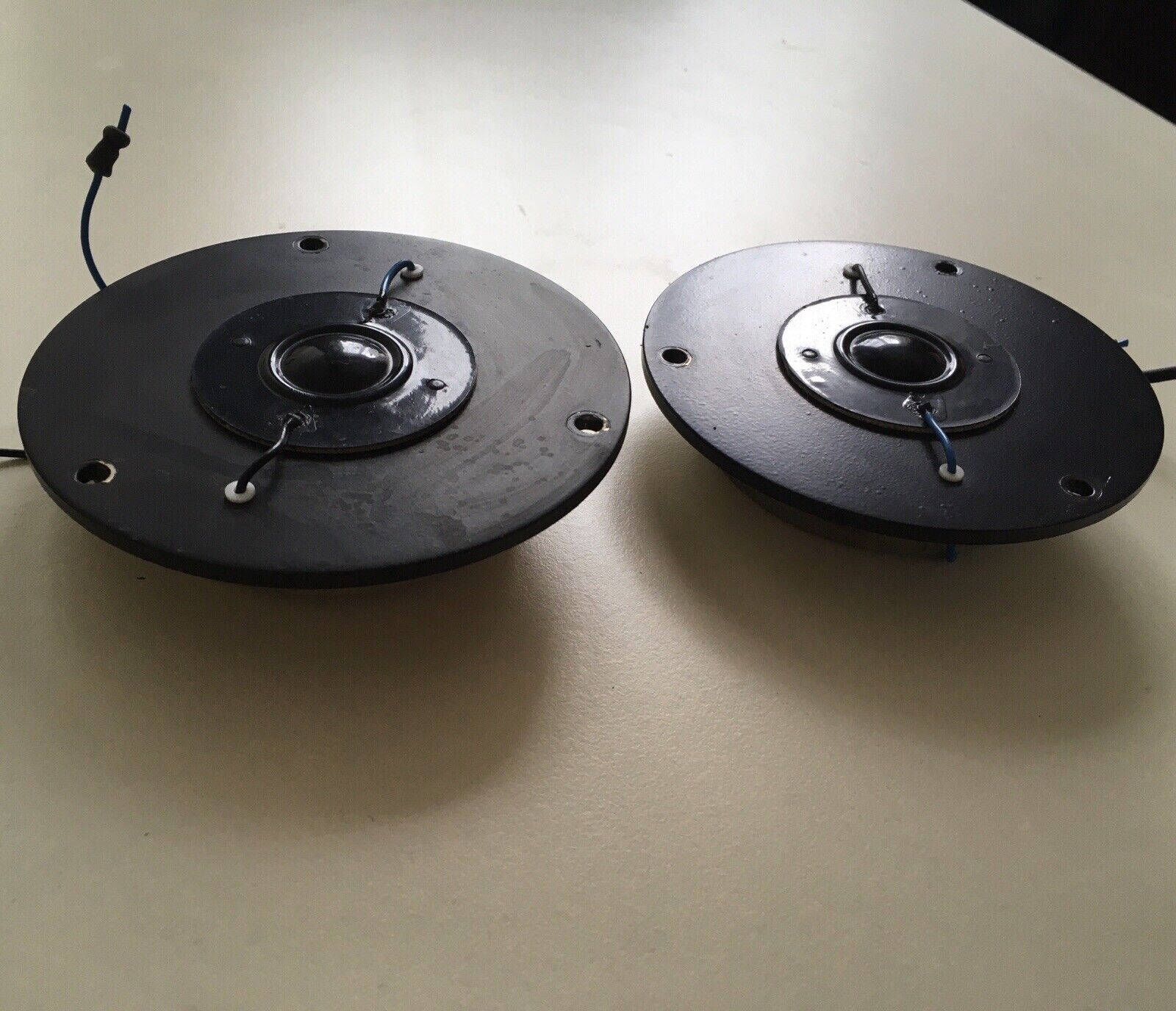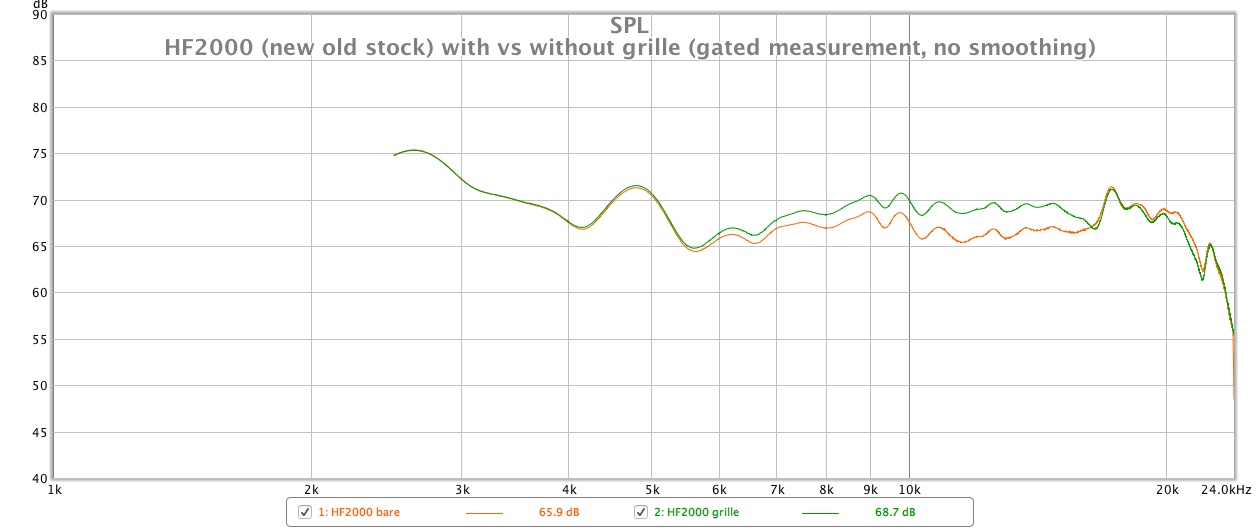Tony L
Administrator
Do the Q7s have the metal mesh dome grilles fitted to the T27s?
It seems clear the BBC weren’t entirely happy with the T27 as that mesh grille, the felt dispersion/diffraction controls and the tygan grille in combination would I’m sure alter it’s perfomance quite noticeably from Kef’s spec sheet. The LS3/5A cab having a recessed baffle and a grille-frame obviously dictates some correction, though many speakers of that era obviously didn’t bother. I guess the BBC approaching this design with such scientific discipline noticed every change and artefact clearly on response plots. It is interesting to contrast with the JR149 which lacks the mesh grille and only had its diffraction issues addressed with foam and deadsheet at a later stage (gold badge-era).
PS After spending more time with LS3/5As I’m finding myself agreeing with the consensus they need very little toe-in. They certainly give a bigger, wider, deeper soundstage firing something fairly close to straight at the back wall. How this fits with their measured dispersion plots I’ve no idea, just a subjective thing and one I’ve read quite often.
It seems clear the BBC weren’t entirely happy with the T27 as that mesh grille, the felt dispersion/diffraction controls and the tygan grille in combination would I’m sure alter it’s perfomance quite noticeably from Kef’s spec sheet. The LS3/5A cab having a recessed baffle and a grille-frame obviously dictates some correction, though many speakers of that era obviously didn’t bother. I guess the BBC approaching this design with such scientific discipline noticed every change and artefact clearly on response plots. It is interesting to contrast with the JR149 which lacks the mesh grille and only had its diffraction issues addressed with foam and deadsheet at a later stage (gold badge-era).
PS After spending more time with LS3/5As I’m finding myself agreeing with the consensus they need very little toe-in. They certainly give a bigger, wider, deeper soundstage firing something fairly close to straight at the back wall. How this fits with their measured dispersion plots I’ve no idea, just a subjective thing and one I’ve read quite often.





